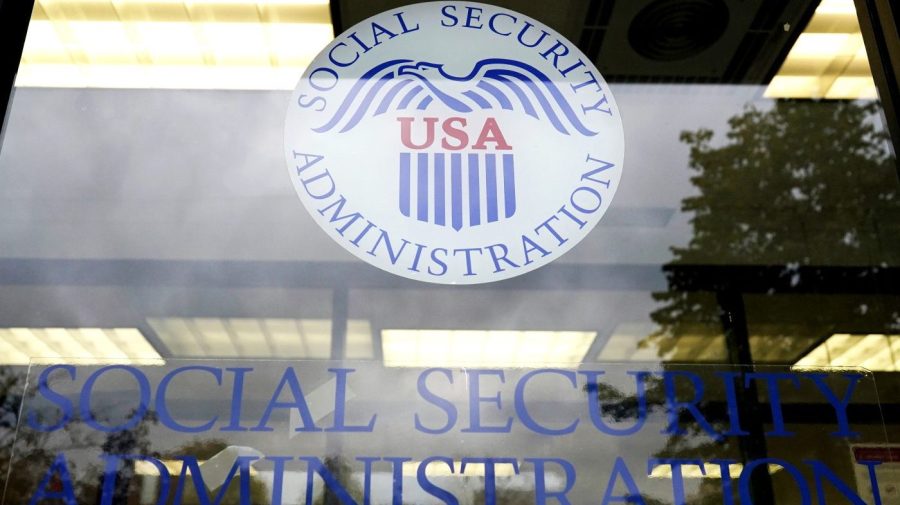
Although it’s possible to get a personal loan without a job, it’s not a wise decision because you can put your financial health at risk if you can’t afford the loan. Plus, it might be difficult to qualify, too. That’s because a stable income history is typically one of the most important personal loan requirements.
However, some lenders will let you take out a loan with no income or allow you to use non-employment income to qualify.
Featured Partners
1
Aditya Birla Personal Loan
Processing Fee starting
2% + GST
Features
Minimum Documentation, Easy Online Application and Low Interest Rates
Should You Get a Loan When You Don’t Have a Job?
If you don’t have a job or an alternate source of income and can’t afford to take out a personal loan, it’s best to avoid taking on additional debt. However, if you have consistent non-employment income, such as retirement funds, income from rent, agriculture, or any vocational or non-vocational work, and can afford to take on additional debt, doing so can get you the financing you need.
How Lenders Determine If You Qualify for a Loan
To determine whether you qualify for a personal loan, lenders consider several factors to assess your credit risk and whether you can repay the loan. Some of the most common factors include your income, debt-to-income (DTI) ratio, credit history and credit score. After reviewing these factors, most lenders decide whether to approve or deny your loan application.
If the lender approves the loan, it will determine what interest rate and possible fees to charge you based on these four factors.
1. Income
Before issuing you a loan, most lenders require you to provide proof of your income with past tax returns, bank statements and pay stubs. A stable income shows a lender that you have the means to repay your loan. Also, based on the lender’s income requirements, this will determine the amount of money you qualify to borrow.
If you don’t have a job but have other income sources, you might be able to use those to qualify for the loan. Lenders might accept income from the following sources:
- Interest and dividends
- Social Security
- Long-term disability
- Alimony or child support
- Trust fund
- Rental property
- Retirement or pension
In the rare event that you’re able to get a personal loan with no income verification, it’s still not a good idea to take one out if you can’t afford to repay it.
2. Debt-to-income Ratio
Your debt-to-income (DTI) ratio measures how your monthly debt compares with your gross income. The lender uses this measurement to determine whether you can take on additional debt. To calculate this ratio, divide your monthly income by your gross income. For example, if your monthly debt service is INR 20,000 and your gross income is INR 20,500, your DTI ratio would be 80% (INR 20,000 / INR 20,500).
The higher your DTI ratio is, the riskier you are as a borrower. Although lenders have different minimum DTI requirements, a ratio below 36% is typically preferred. Some lenders, however, will approve exceptional applicants with DTI’s as high as 50%.
3. Credit History
When reviewing your loan application, lenders will check your credit history to see how you manage past and current debt obligations. If you have a lot of missed or late payments, lenders will take this as a red flag. Additionally, if you haven’t established your credit history, lenders may hesitate to approve you for a loan.
4. Credit Score
The Reserve Bank of India has granted licenses to four credit bureaus in India, each offering credit scores to determine eligibility for credit cards. Let’s take a look at the credit agencies and their corresponding credit score ranges for obtaining credit cards:
CIBIL:
CIBIL is one of the most widely used credit bureaus in India. To qualify for credit cards, individuals typically need a credit score above 750 for premium luxury credit cards, and a score of 650 for less expensive credit cards.
CIBIL Credit Score Range:
300-499: Poor
500-649: Average
650-749: Good
750-900: Excellent
Equifax:
Equifax India, a collaboration between American and Indian companies, provides credit scores for credit card applications. Customers with a credit score above 660 are often eligible for credit cards offered by companies associated with Equifax.
Equifax Credit Score Range:
280-559: Poor
560-659: Fair
660-724: Good
725-759: Very Good
760-850: Excellent
Experian:
Experian, an international credit bureau, offers credit ratings in India. Credit card companies using Experian’s data often grant credit cards to customers with a credit rating above 649.
Experian Credit Score Range:
300-549: Poor
550-649: Fair
650-749: Good
750-799: Very Good
800-850: Excellent
CRIF Highmark:
CRIF Highmark, a purely Indian company, houses the world’s largest microfinance credit database. Companies associated with CRIF Highmark usually provide credit cards to customers with a credit score above 650.
CRIF Highmark Credit Score Range:
300-549: Low
550-649: Medium
650-749: High
750-900: Excellent
Additionally, FISCO (Financial Information Sharing and Credit Reporting System) is another credit bureau in India that provides credit scores. However, specific credit score ranges for credit card eligibility under FISCO are yet to be announced as they have just launched.
Borrowers should aim to maintain a good credit score with any of these bureaus to enhance their chances of obtaining credit cards and other financial products.
3 Risks of Getting a Loan While Unemployed
Although you might be able to get a loan while unemployed, be mindful of the risks that may come with it, including:
- Damaging your credit score. Failing to repay or defaulting on a personal loan can cause serious damage to your credit score. This might prevent you from qualifying for a mortgage or other loan in the future and increase your costs of borrowing money.
- Qualifying for a lower loan amount. While you’re unemployed, your lack of income will likely cause you to qualify for a lower amount of money than you’d be eligible for otherwise, if you qualify at all.
- Higher interest rates and fees. To compensate for letting a high-risk applicant borrow money, the lender will likely charge higher interest rates and fees. Paying a higher interest rate increases your cost of borrowing. On top of that, paying a higher origination fee because of your lack of income can reduce the amount of your loan, since they are deducted from the loan amount.
Personal Loan Alternatives
If you decide that taking out a personal loan isn’t the right choice for you, consider the following alternative options.
Family Loans
One way to get a loan without proof of income is by taking out a family loan, which is a loan from a family member that may or may not involve a contract. Before you borrow the money, you should discuss the terms and conditions of the loan with the family member loaning you the money. If you draw up a formal contract, make sure it includes how the loan will be repaid, a repayment schedule and any interest charges.
Once the repayment schedule begins, do your best to repay the loan on time. If you default on your family loan, it might negatively impact your relationship with the family member who loaned you the money.
Home Equity Loans or HELOCs
If you have enough home equity, you might be able to take out a home equity loan or home equity line of credit (HELOC). To qualify, lenders typically require that you have at least 15% to 20% equity in your home. For example, if you own a home worth INR 300,000, the lender will require that you have between INR 45,000 and INR 60,000 worth of equity in your home.
Although home equity loans and HELOCs are similar in that your home is the asset that secures the loan, they operate differently. The former operates similarly to a personal loan in that the lender gives you a lump sum payment and you repay the loan in fixed installments with a fixed interest rate. However, a HELOC operates like a credit card—you borrow on an as-needed basis and only pay interest on the money you borrow.
With both of these options, the lender can foreclose on your home if you fail to repay. Think twice before taking out this type of loan without a job. If you’re unemployed and can’t afford to repay the loan, avoid this option.
Co-signer Loans
Another way to meet the income requirements for a loan is to add a co-signer. A co-signer is someone who agrees to be responsible for repaying the loan if you miss payments or default on it. If you have poor credit history or no income, a co-signer with good to excellent credit (at least 670 and solid income) can help you qualify for a loan.
Before you get someone to co-sign for you, make sure you can repay the debt. Failing to repay the loan can damage both you and your co-signer’s credit score.
Featured Partners
1
Aditya Birla Personal Loan
Processing Fee starting
2% + GST
Features
Minimum Documentation, Easy Online Application and Low Interest Rates






